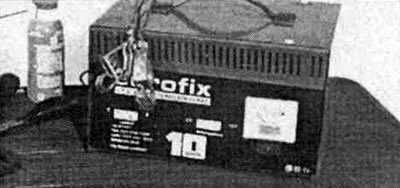Stages of work
Disconnect the negative wire (ground connection) from the battery. Charger Plus (red) connect to positive pole, negative wire (black) to the negative pole of the battery.
The charging current should initially be equal to approximately 10% of the battery capacity (e.g. 4.0 A with 43 Ah battery) and then in the process of charging automatically fall.
During charging, tiny gas bubbles formed above the cells, made up of hydrogen and oxygen. The mixture exits from the vents or from the central gas outlet to the atmosphere. It is a highly explosive explosive gas. Be careful indoors: if a pungent smell hits the nose, then the concentration has become explosive.
Therefore, always take care of effective ventilation of the workplace. This is especially true when high charging currents flow. The oxyhydrogen gas can be ignited by sparks generated when connecting and disconnecting the charger or battery cables. Follow the safety regulations.

The dismantled battery should be recharged by an amateur charger once a month.
Visitor comments